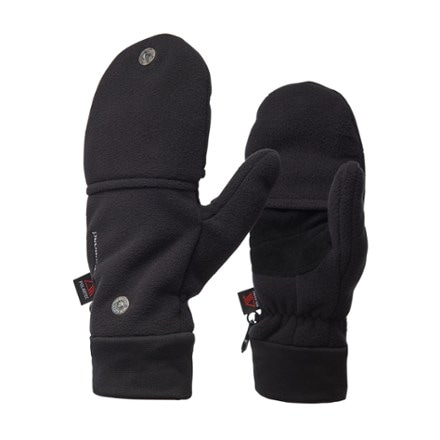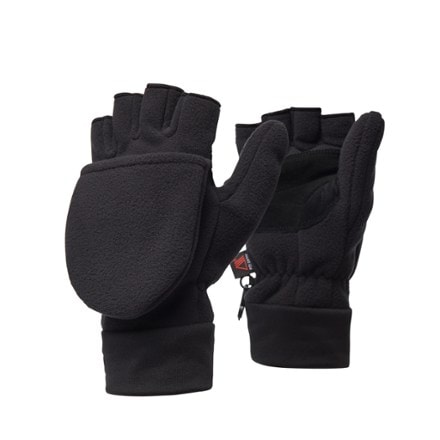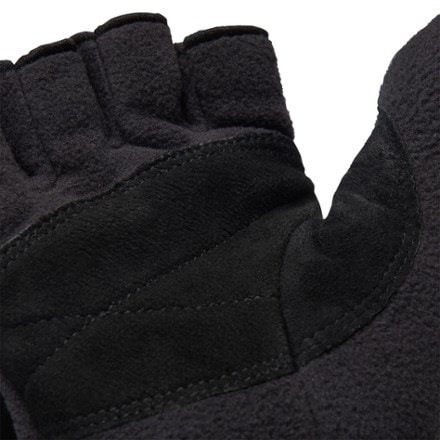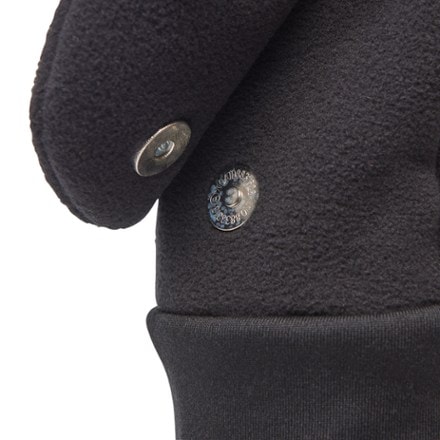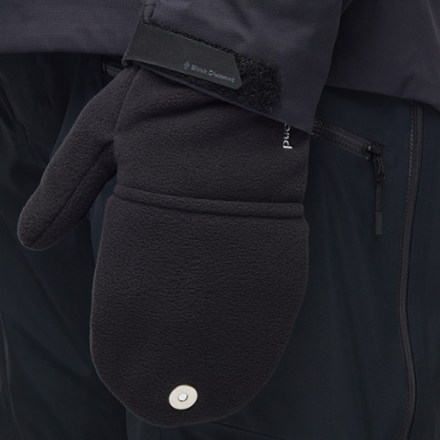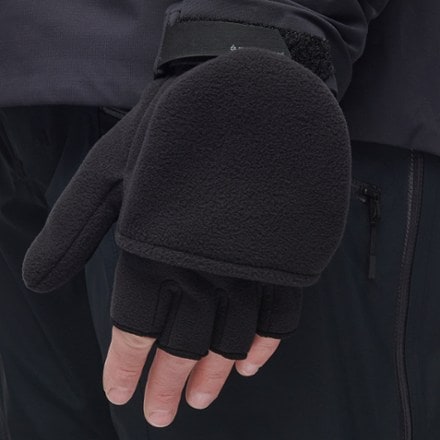Skip to search results
loaded 1 results
Black Diamond Polartec Men's Downhill Ski Clothing
(1 product)Products (1)
Filter
- Men's Ski Gloves (1)
- Snowsports (1)
- Black (1)
- Unisex (1)
- Convertible (1)
- Synthetic (1)
- $20.00 to $49.99 (1)
- XS (1)
- Regular (1)
Sort: Best Match
View:
- Black DiamondWindWeight MittensTop Rated$44.95(9)9 reviews with an average rating of 4.8 out of 5 stars
Sort: Best Match
Related Expert Advice articles
What type of skiing will you be doing?
- Downhill ski poles: Poles for alpine skiing help with balance and timing turns. Many are fixed length; some are adjustable.
- Backcountry ski poles: Opt for adjustable poles so you can lengthen poles when going uphill and shorten them when descending.
- Cross-country ski poles: Longer and lighter, designed to help you glide forward efficiently. Poles for skate skiing are longer than for classic skiing.
Find the right length
When looking for proper fit, consult the brand's sizing chart. For downhill skis, wear your boots and turn the poles upside down. Grip the poles just below the basket. Your elbow should form a 90° angle. If the angle is less than 90°, try a shorter pole. If the angle is greater, get a longer pole.
Pole features
- Straps: Wrist straps help retain poles during turns and falls. Some models have detachable straps for quick transitions.
- Baskets prevent poles from sinking into the snow. Choose a standard basket for most conditions, and use a larger basket for powder skiing.
Learn how to choose and use an avalanche transceiver for backcountry safety. Explore features, types, training tips, and top-rated models at REI.
Read full article: How to Choose and Use an Avalanche Transceiver
Key features of backcountry snow shovels:
- Material: Because of its low weight and high strength, aluminum predominates. Plastic shovels aren't suited to avalanche rescue.
- Comfort: Low weight and a comfortable, ergonomic grip will make a shovel easier to use.
- Length: Longer, extended shafts may give you better leverage to scoop snow faster while shorter shafts cut down on weight.
Types of snow shovels:
- Fully flat blades are best for snow study, such as creating smooth snow-pit walls.
- Scooped blades are less likely to spill snow off the sides during shoveling.
- Serrated blade edges can be used to bust up ice.
- Blades with holes in them can be used (with a length of accessory cord) to build snow anchors; holes also make a shovel slightly lighter to carry.
T-grip vs. D-grip handles:
- T-grip: Grasped between the fingers, this is a lightweight design that works well; can be awkward when wearing mittens.
- D-grip: Slightly bulkier and heavier than a T-grip, it is relatively easy to use while wearing mittens.
Learn how to do blocking pole plants so you can control your speed on steep slopes. Includes a video and tips for mastering the technique.
Learn about the essential avalanche safety gear you need to carry when you venture beyond in-bounds ski areas.
